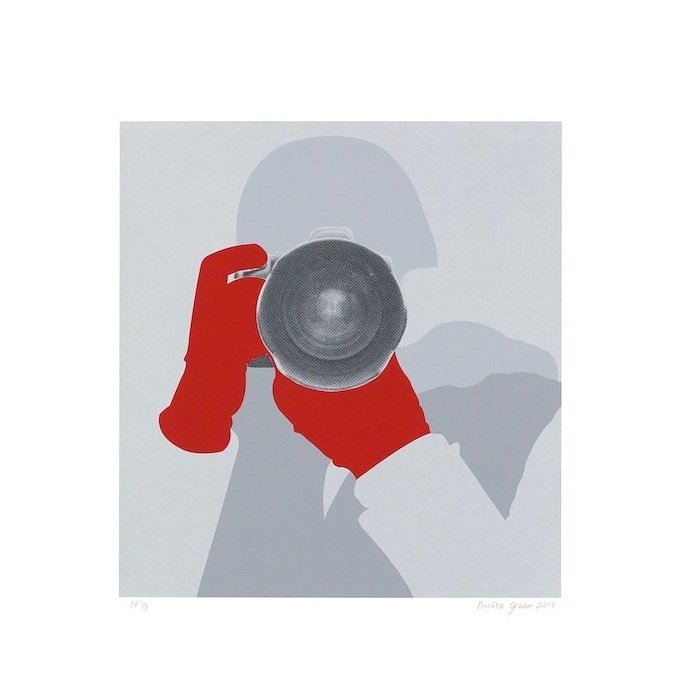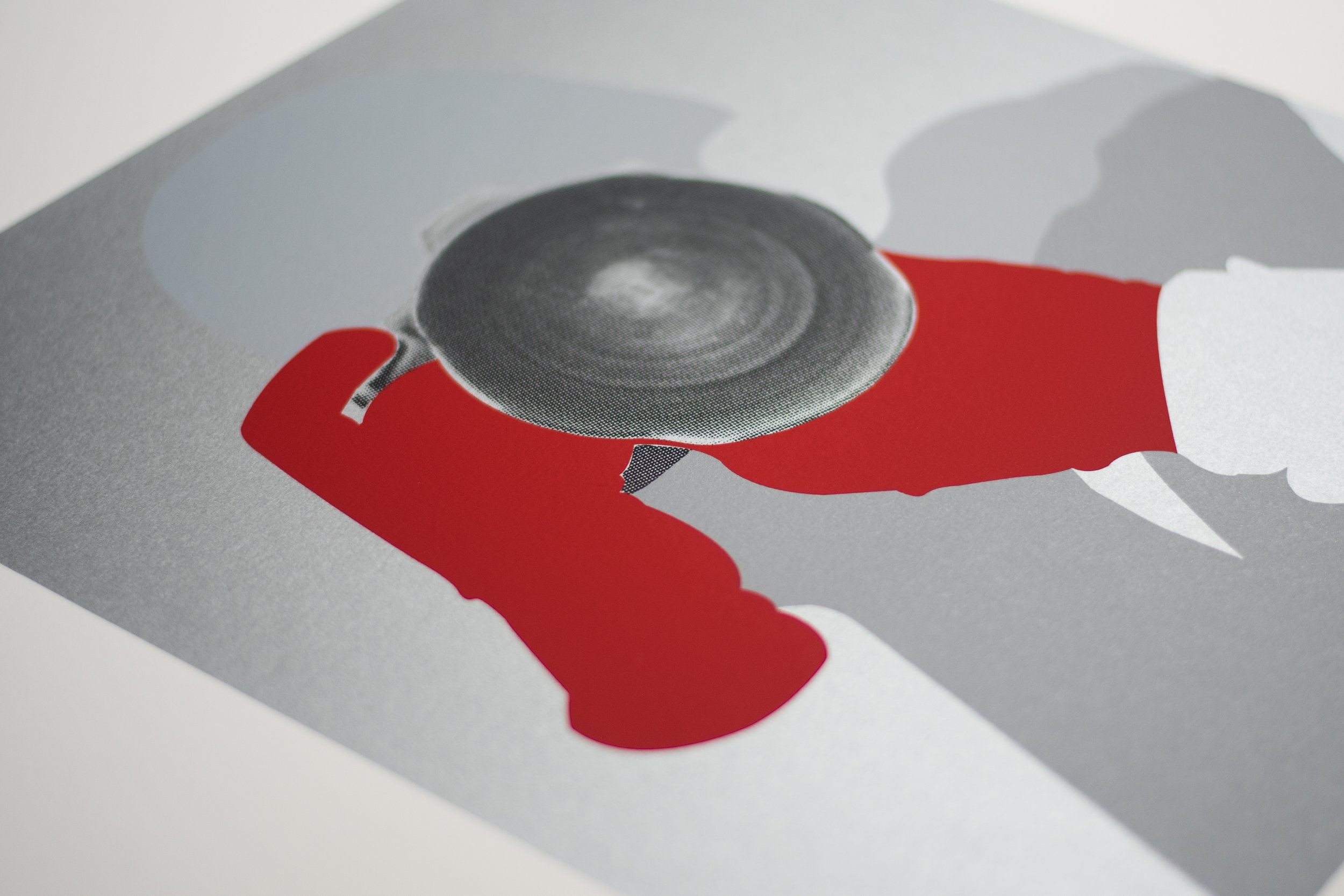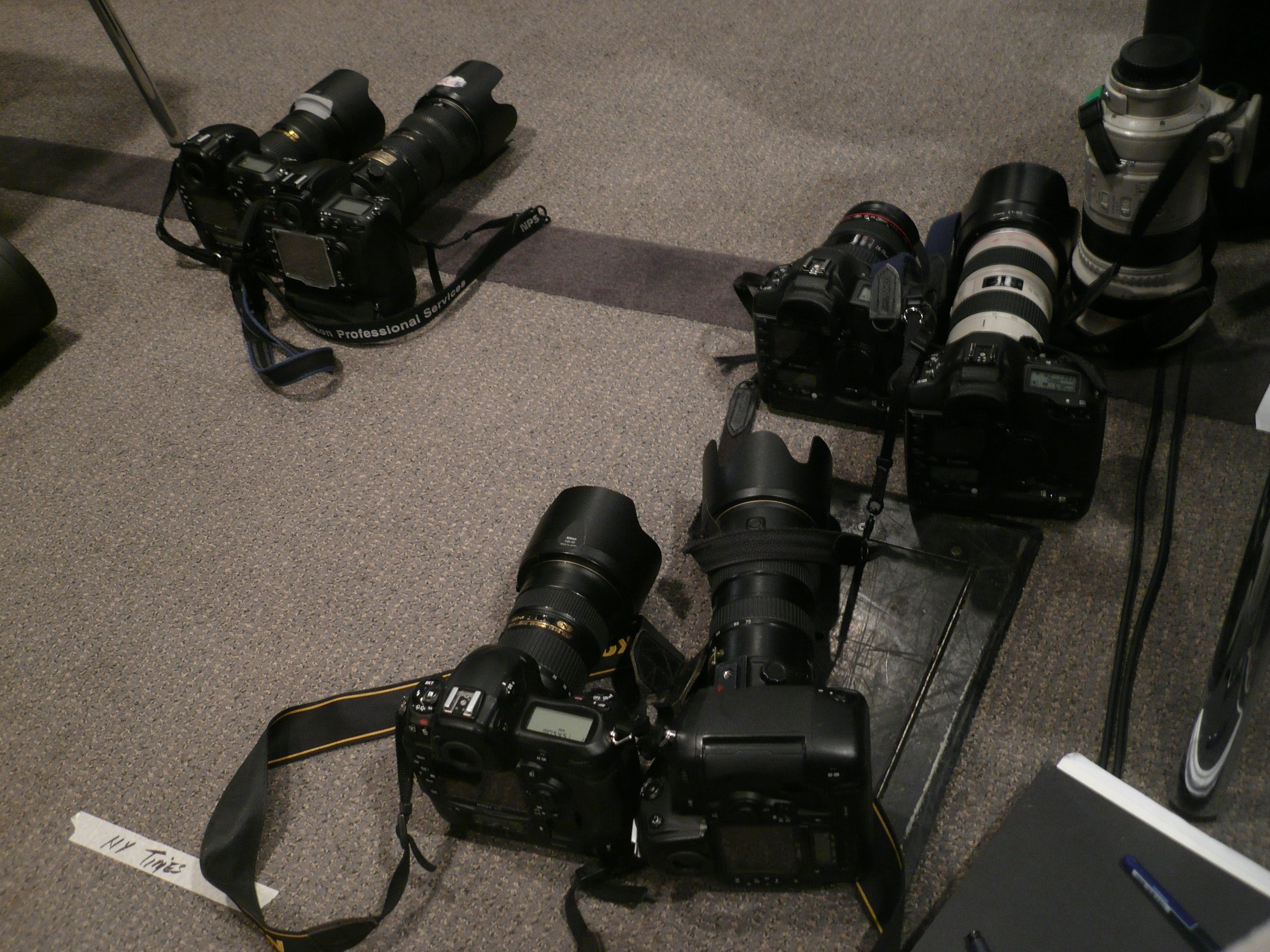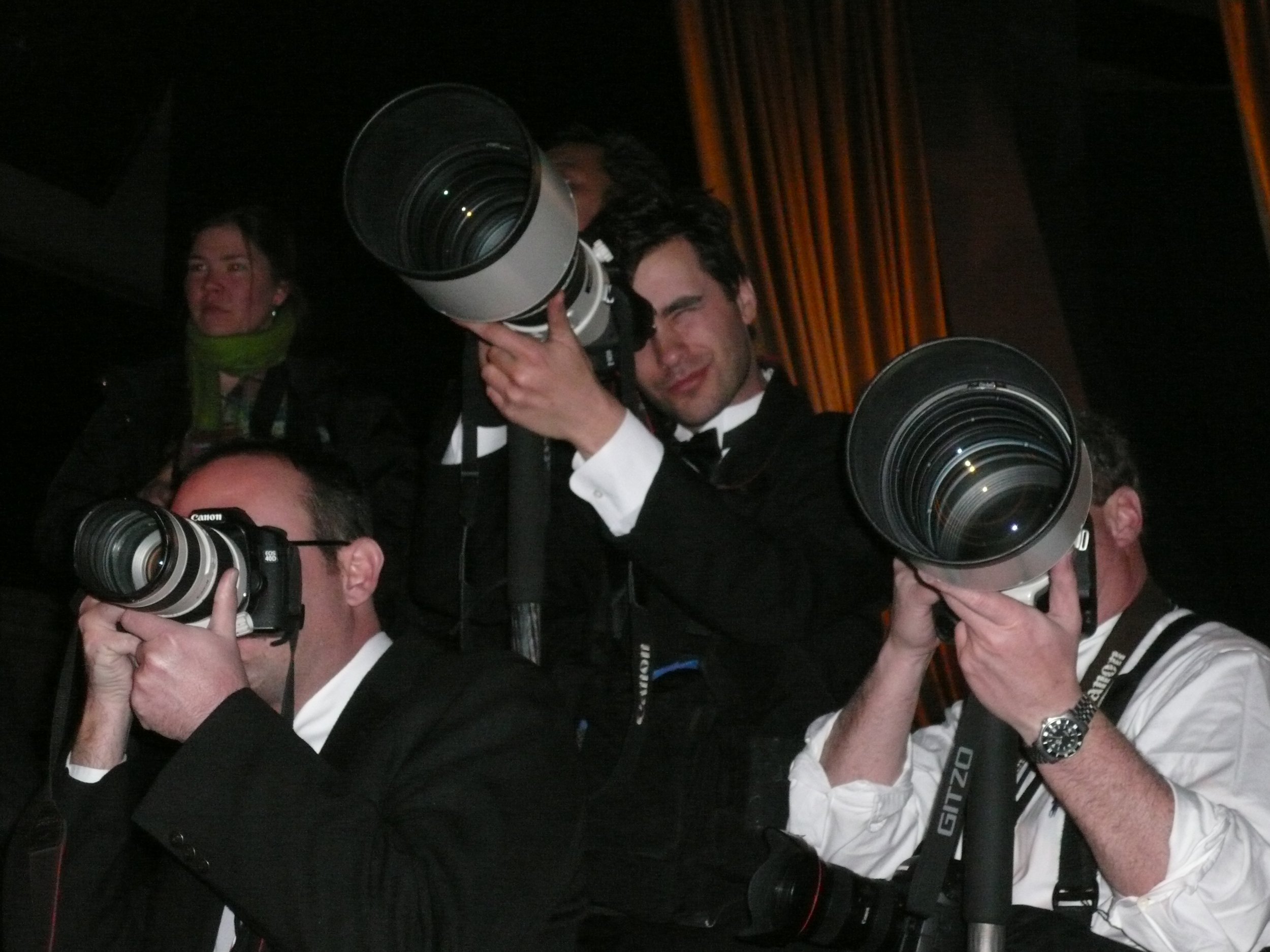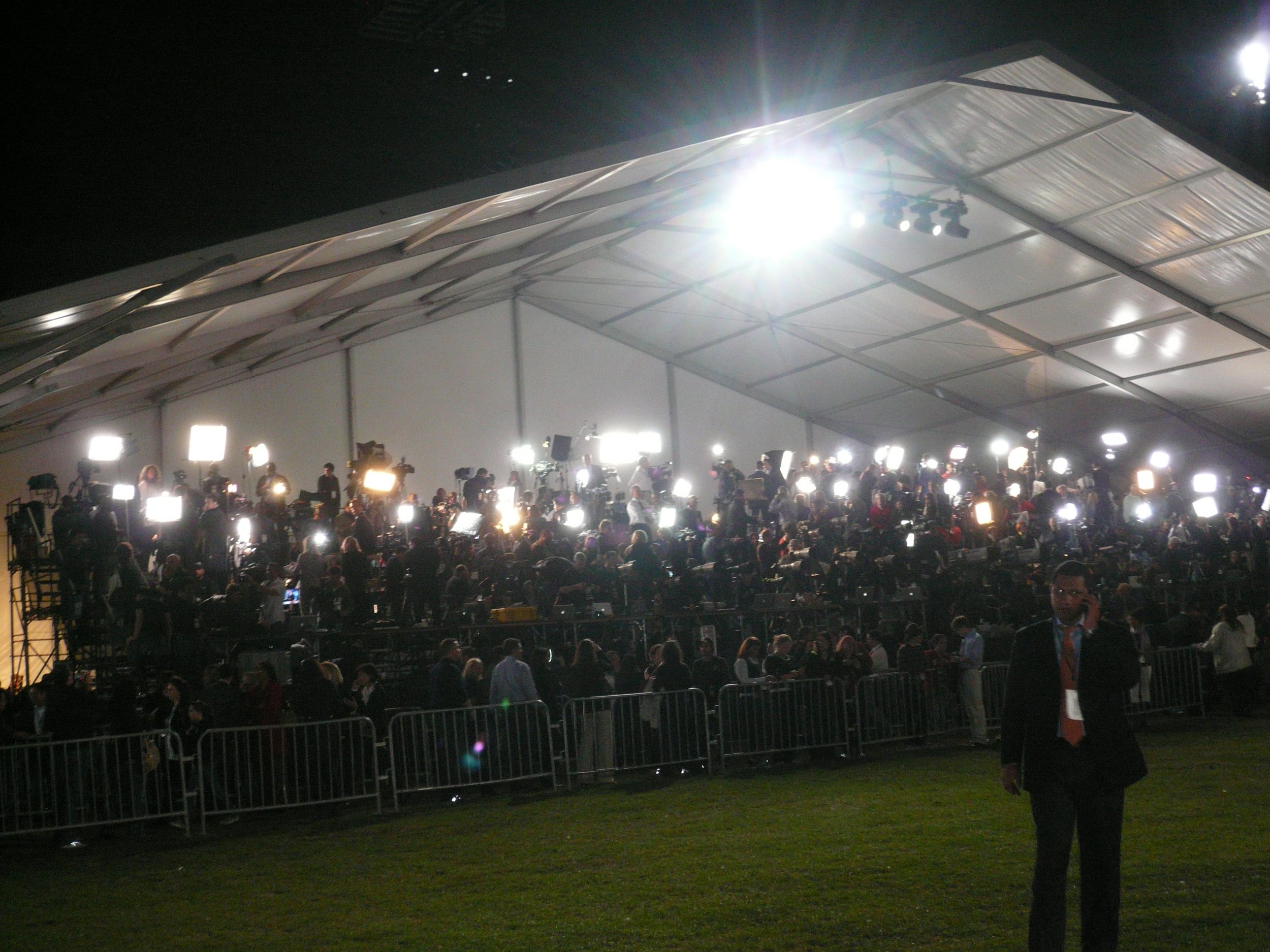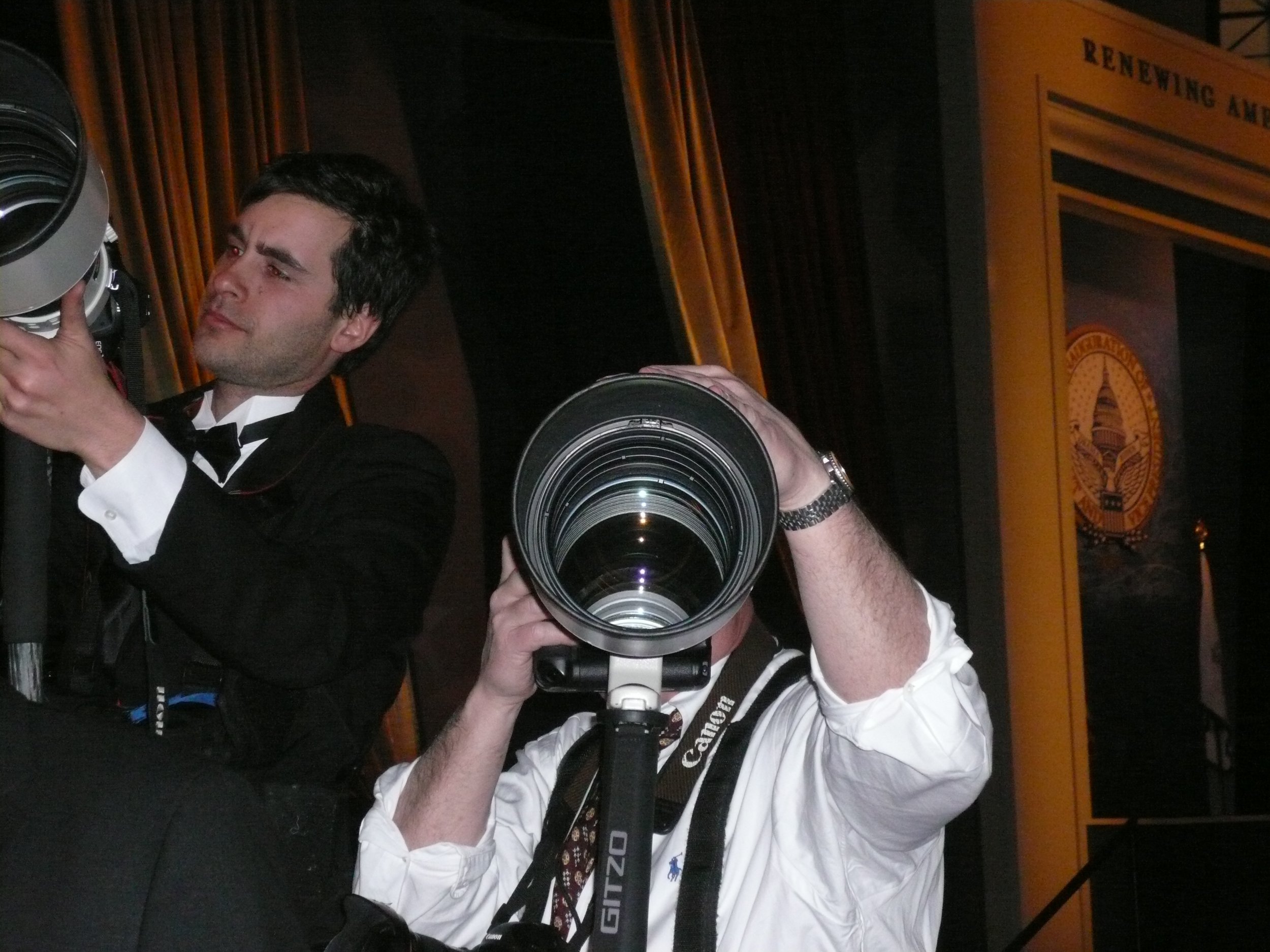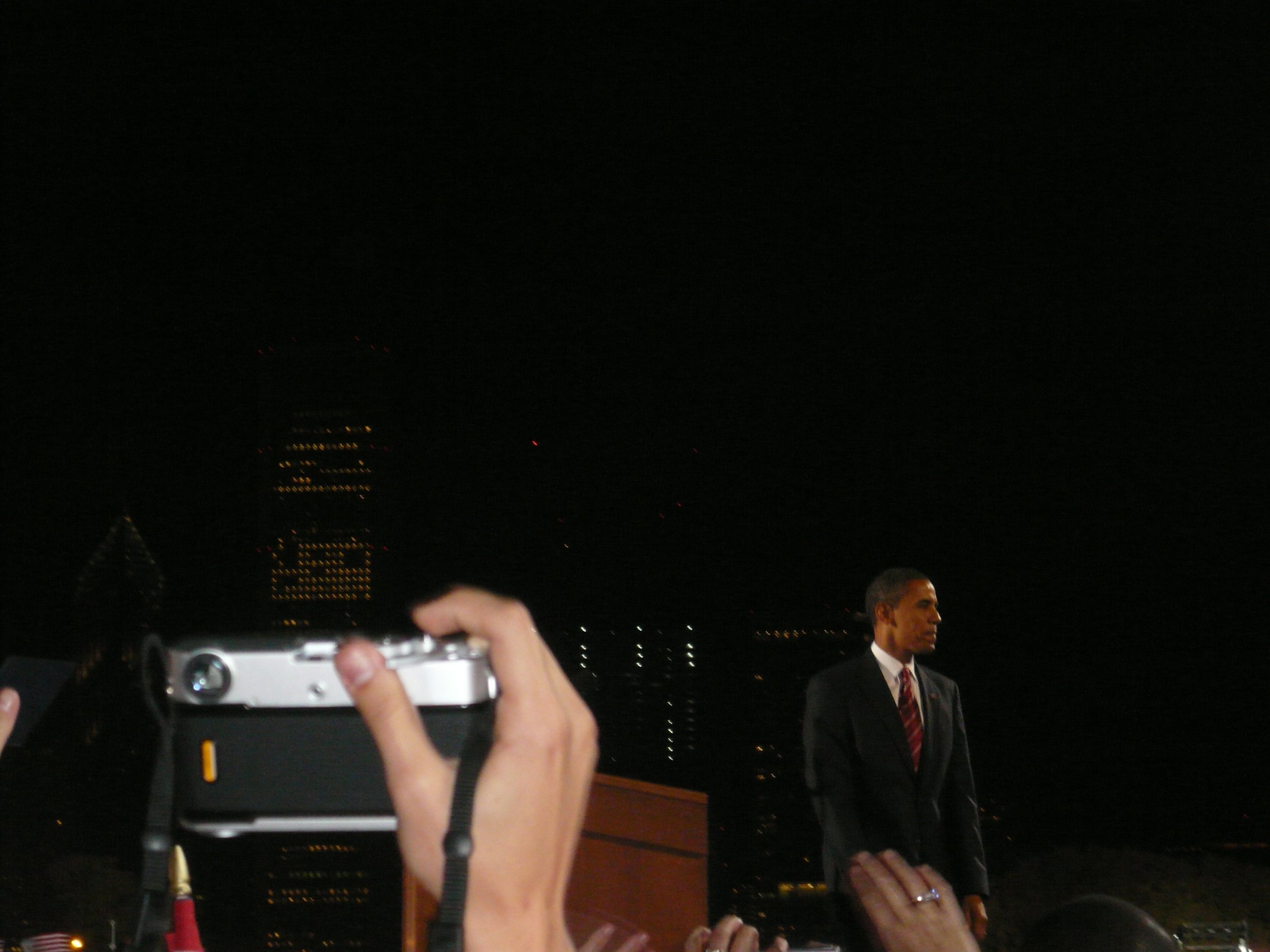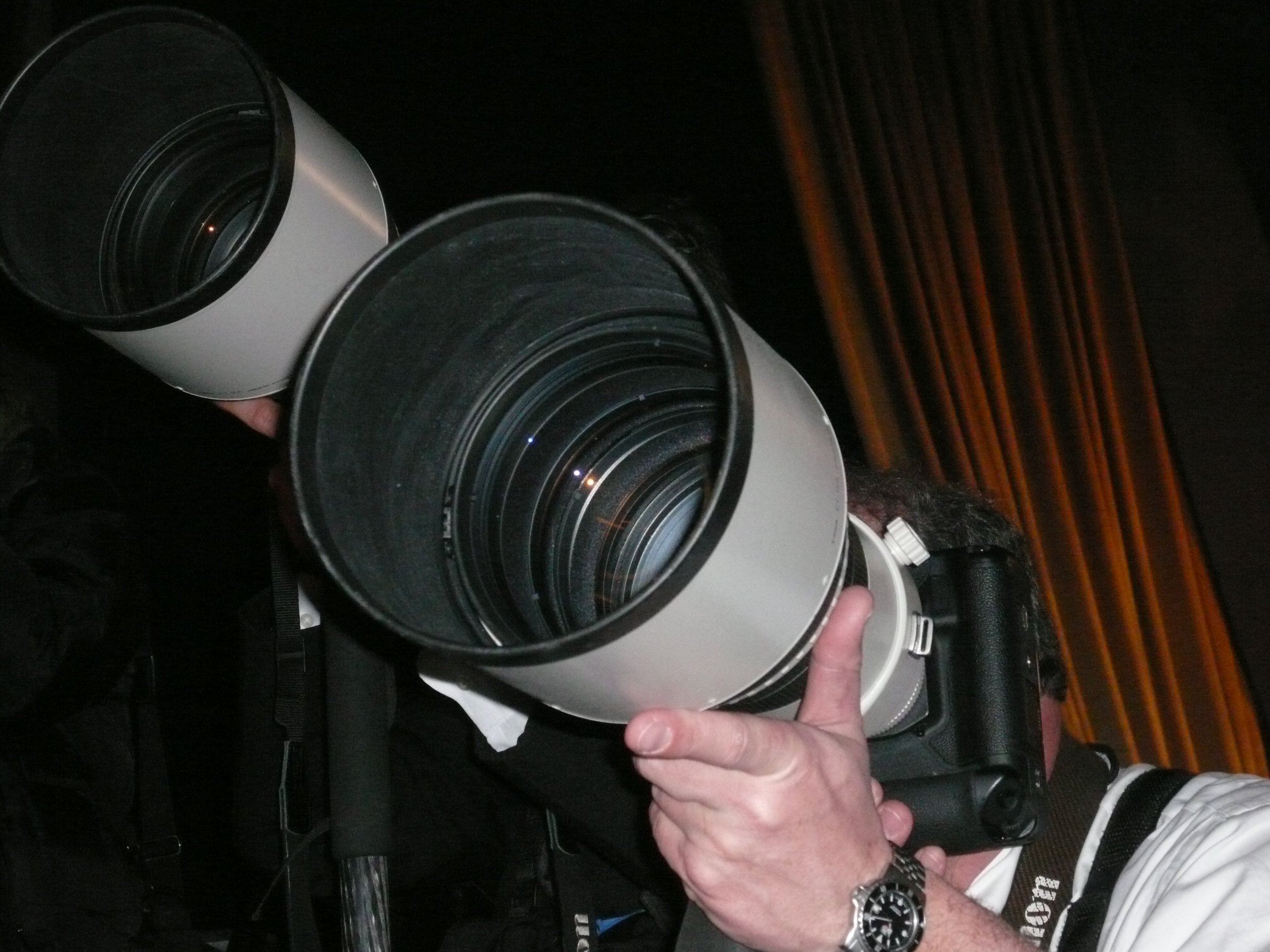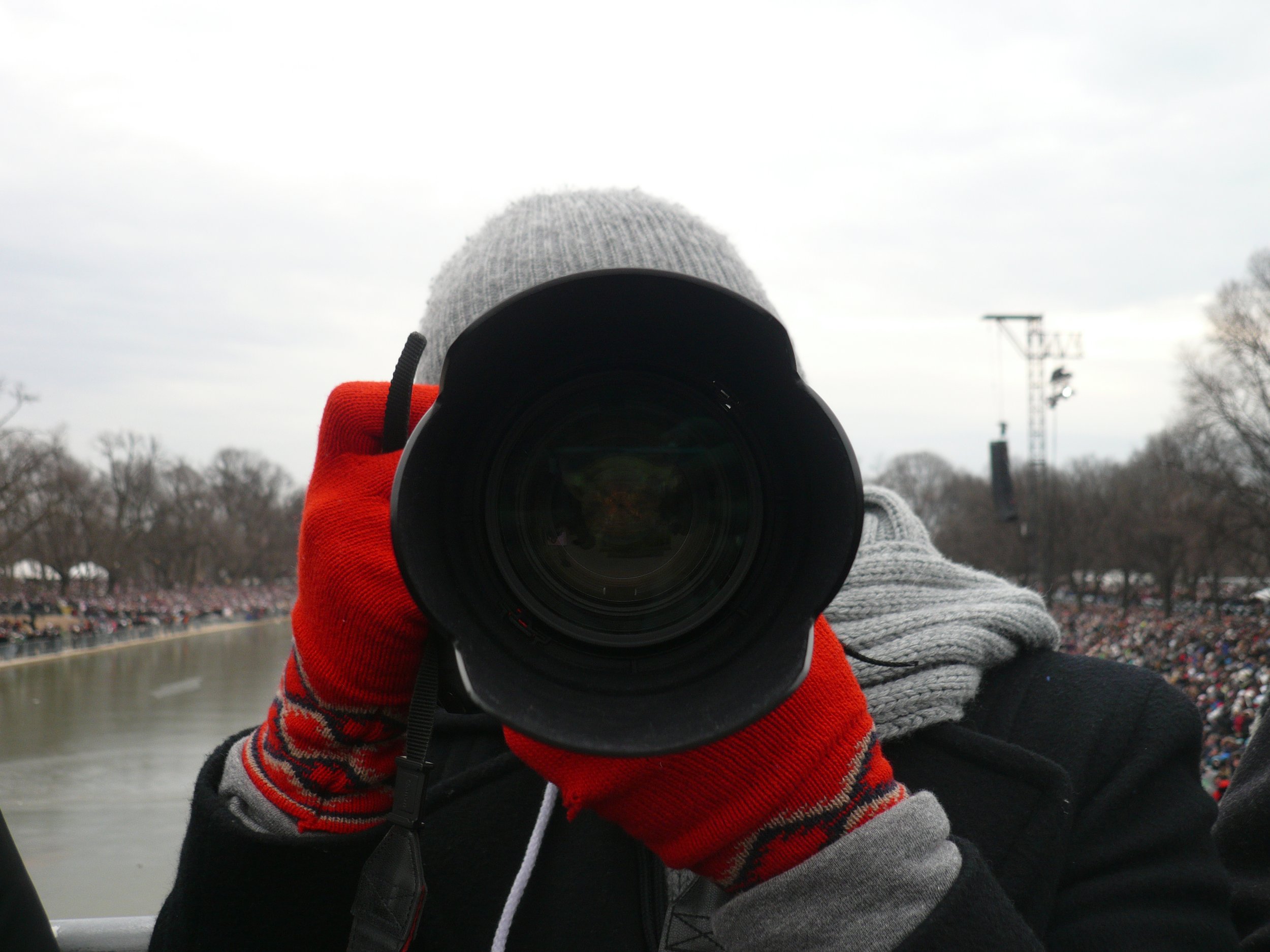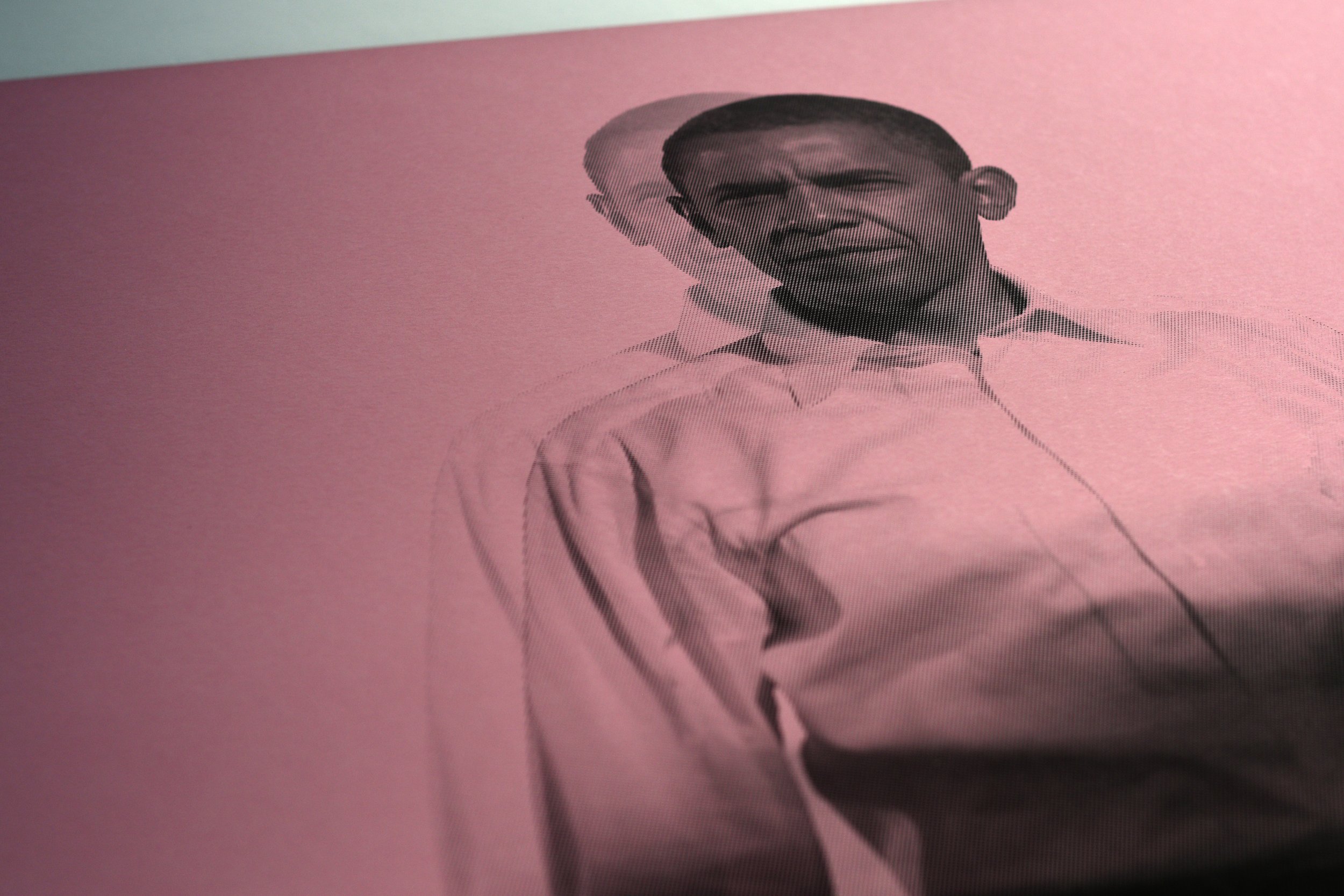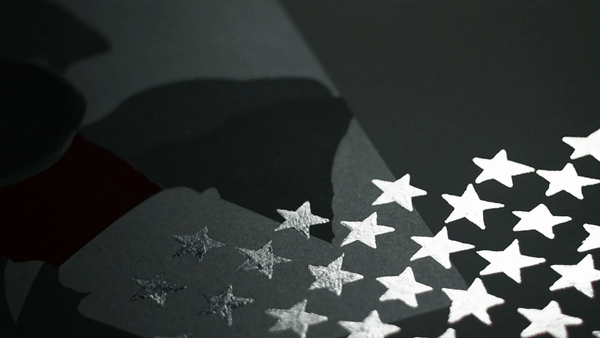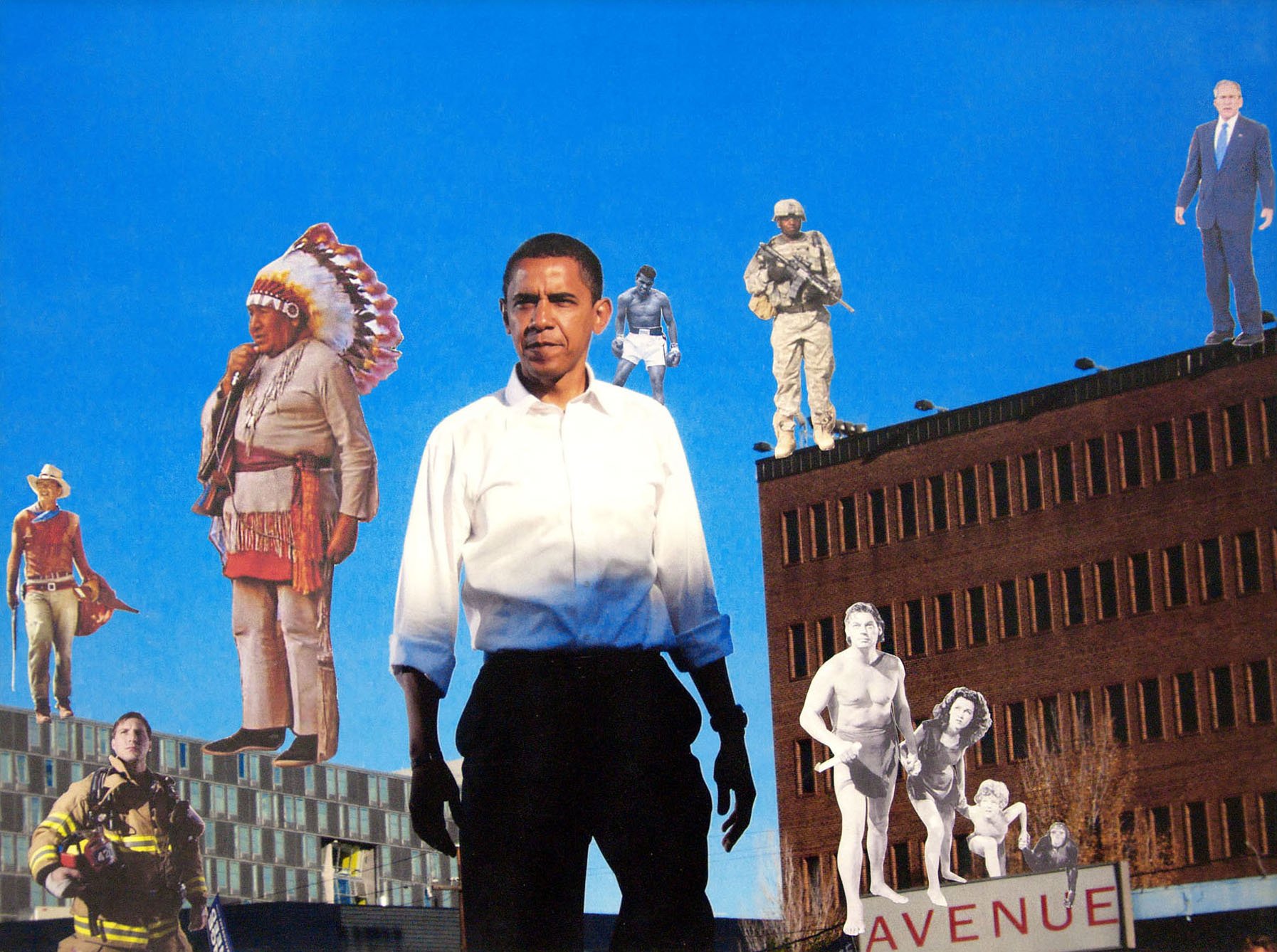In Seven Days… was created from my experience on President Obama’s 2008 campaign trail and the final images are the visual legacy of this historic moment. However this work also represents a much wider story; a constantly evolving discussion on race, heritage, identity, and representation.
For International Women’s Day I wanted to highlight some of the ways I have explored gender in this work, and particular my own role as a female artist.
When I was making Day 5, Fear, I wanted to try to capture the viewpoint and experience of the subject. I observed someone who, the minute he stepped outside, was constantly confronted with a sea of cameras, especially those huge professional cameras, with gigantic zoom lenses. The photographer in this piece represents more than just the media pack; it’s about global scrutiny and what it means for any human being to be subjected to such a prolonged and relentless public gaze. In 2008 the entire world was watching this moment, watching the first African American presidential candidate. I wanted to use this work to turn the lens back on all of us who were looking at this individual and the story unfolding. Photography is often considered to be neutral or factual, yet has so often been used to fetishise, objectify and commodify its subject. Photography has both challenged and perpetuated stereotypes throughout history, particularly concerning race and gender. It has a capacity to impact the way people see themselves and others and can create shifts in society. I wanted to interrogate both the artist and the viewer and question what we consume with our gaze.
Day 5, Fear reflects my role in the story as an outsider, and as a female photographer. When photographing my subjects, I try to assume the role of witness, to become as invisible as possible so that my presence does not shape the events unfolding before me. I have been inspired by Susan Sontag, and the idea that ‘the whole point of photographing people is that you are not intervening in their lives, only visiting them.’ For this reason I tend to rely on notes and sketches captured in the moment, or if I take photos, I use small, discreet digital cameras. My experience watching press photographers up close is that they tend to be male, and they usually operate in a far more direct and often more invasive way.
When making Encounters I was following the world’s religious leaders who are almost exclusively male. In the accompanying academic book Encounters: The Art of Interfaith Dialogue Dr Maryanne Saunders wrote a chapter that looked at the biblical trope of women as a passive witness and explored how my artistic practice and philosophy both perpetuates and challenges this
‘It is pertinent to consider whether she (Green) would have been granted such permissions and relied upon quite to this extent if she had been a male artist proposing the project. The invasive, greedy image of press photography is, after all, inextricably connected with masculinity and aggression. Green’s position as an outsider, as a lay person, an artist, and as a woman, was not necessarily a disadvantage. In this case it bought her freedoms as well.’ Maryanne Saunders, Women as Witness: Gender and Participation in Encounters
As women have been so marginalised/absent in the male-dominated world of photography I was very conscious, when making In Seven Days… to consider my role representing the female gaze. I created multiple experimental works exploring and challenging ideas of American identity and in particular how President Obama was redefining masculinity in relation to power and race. This approach enabled me to develop a very different series of photographs to the press pack and resulted in a series of final images presenting a unique perspective on a well-documented story.
*In all of my work I celebrate a plurality of voices and am committed to inclusivity, intersectionality and the multiplicity of womanhood. My use of gendered language in this piece reflects my own experiences, but should be understood to include anyone who identifies as female.

